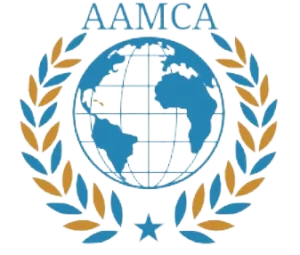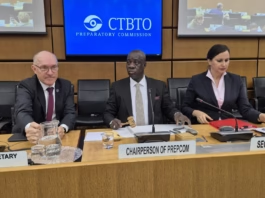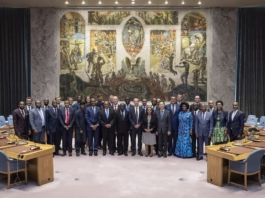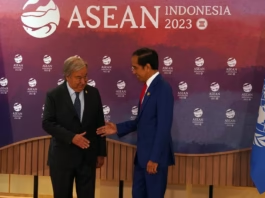The Alarming Landscape of Illicit Small Arms
Globally, the illicit trade of small arms and light weapons poses significant threats to security and stability. With over one billion firearms estimated to be in circulation, the widespread availability of these weapons continues to contribute to various crises, including violence, terrorism, and organized crime. Rising military expenditures across numerous nations exacerbate this situation, as governments increasingly prioritize the acquisition of advanced weapons systems, inadvertently fueling demand within the illicit market.
Advanced trafficking networks have emerged, demonstrating a high level of sophistication in their operations. These networks are often transnational, making it challenging for law enforcement agencies to dismantle them. Such organizations employ innovative methods of distribution and concealment, ensuring their activities remain largely hidden from authorities. The combination of corruption, ineffective governance, and weak regulatory frameworks further complicates the enforcement of existing arms regulations, resulting in a flourishing black market for small arms.
The advent of new technologies, particularly 3D printing, has introduced alarming possibilities in the production of untraceable firearms. This technology makes it feasible for individuals and groups to fabricate firearms with minimal resources, bypassing traditional manufacturing processes that are subjected to regulations and scrutiny. Consequently, the proliferation of homemade firearms poses a significant challenge to public safety and security as the weapons are difficult to regulate and control.
As the illicit trade of small arms continues to evolve, it is imperative for governments, international organizations, and civil society to collaborate and develop comprehensive strategies aimed at curbing this crisis. Understanding the intricate dynamics and severe implications of the current landscape is essential for implementing effective solutions to combat the rampant proliferation of small arms in our society.
The Human Cost and Link to Instability
The trade in small arms presents a significant human cost, deeply impacting civilian lives and contributing to escalating violence and instability. Research indicates a dramatic increase in conflict-related civilian deaths directly correlated to the availability and proliferation of illicit small arms. These weapons, often acquired through illegal means, exacerbate already precarious situations in conflict zones and lead to enduring cycles of violence.
In many instances, the root cause of illicit arms purchases can be traced back to poor governance and weak public institutions. Countries with unstable governments often struggle to maintain order, allowing arms trafficking networks to flourish unchecked. For example, in regions such as Haiti, where governance is frail, the influx of small arms fuels gang violence and undermines efforts to achieve peace and stability. The availability of such weapons thereby acts as an ‘exponential multiplier,’ intensifying existing crises and hampering reconstruction and governance initiatives.
Case studies from various nations illustrate the pervasive impact of illicit arms on everyday violence. In parts of Africa, for instance, armed groups often exploit the situation by acquiring small arms illegally, which they use to exert control over local populations, intimidate rivals, and complicate humanitarian efforts. The resulting insecurity not only displaces communities but also hampers economic development and access to essential services, perpetuating the cycles of poverty and conflict.
The connection between small arms proliferation and human suffering is undeniable. As nations grapple with these challenges, understanding the links between illicit arms trade, weak governance, and societal instability is essential for crafting effective policy responses aimed at reducing the human cost associated with these destructive forces.
Regional Case Studies: The Impact of Illicit Arms Trade
The illicit trade of small arms has manifested uniquely in various countries, leaving deep socio-economic scars that hinder development and stability. In Haiti, political instability and pervasive poverty have created a breeding ground for armed gangs. These groups, often equipped with illegal firearms, exert control over local communities. The lack of governmental authority in many areas exacerbates the situation, fostering a cycle of violence that challenges efforts for peace and development.
Similarly, the Democratic Republic of the Congo (DRC) faces a dire predicament with the illicit arms trade. The DRC’s porous borders facilitate the movement of arms not only within the country but also across neighboring states. This situation has contributed to prolonged conflicts fueled by both local militias and foreign actors, complicating peace efforts and exacerbating human rights abuses. The arms trade here intertwines with mineral exploitation, where arms are utilized to secure access to resources, further skewing socioeconomic dynamics in favor of the elite.
In Ukraine, the conflict that erupted in 2014 following annexation by Russia has significantly altered the landscape of arms proliferation. The influx of illegal arms, coupled with the presence of a robust black market, has intensified violence in the region. The government’s attempts to regain control face hurdles, as arms from conflict zones find their way into civilian hands, posing long-term security risks. The generational impact of this conflict highlights the urgent need for international cooperation to curb illegal arms trafficking.
Colombia presents another case where historical factors such as drug trafficking and guerrilla warfare have created an environment conducive to the illicit arms trade. Armed groups utilize small arms not only for territorial control but also as leverage in negotiations with the government. Comprehensive policy responses, including disarmament initiatives, strengthened border controls, and community engagement, are essential to dismantle this cycle of violence and promote lasting peace.
Addressing the challenges posed by illicit arms trade in these regions is crucial for fostering sustainable development and enhancing security. Each case underscores the necessity for targeted policies aimed at improving governance and counteracting the influence of criminal organizations, ultimately paving the way towards more stable and secure societies.
Calls for Action: Strengthening Frameworks and Solutions
The illicit trade of small arms presents a significant global challenge, necessitating a robust response that involves enhancing existing frameworks and proposing innovative solutions. A fundamental step in this process is the strengthening of international agreements such as the Arms Trade Treaty (ATT). The ATT provides a comprehensive framework for states to regulate the international trade of conventional arms, and its effective implementation is crucial in preventing the diversion of weapons to illicit markets. By promoting adherence to the treaty among nations, the global community can work towards reducing the circulation of small arms and their potential use in conflict zones.
Additionally, advancements in arms production technology have complicated the landscape of small arms trafficking. To combat this, states must enhance cooperative measures, improving traceability systems that can effectively monitor and control the movement of arms. Developing mutual legal assistance treaties among nations can facilitate the sharing of intelligence and resources, serving as a key strategy in dismantling trafficking networks. Moreover, providing targeted support to post-conflict countries is essential in stabilizing regions recovering from violence. This support should focus on disarmament, demobilization, and reintegration (DDR) programs that help communities transition from a culture of violence to one of peace.
Addressing the root causes of instability is paramount in curbing the demand for illegal arms. Strategies must include integrating local communities into arms control efforts, where grassroots movements can play a pivotal role in advocating for peace and security. Finally, redirecting military expenditures toward sustainable development initiatives will not only reduce the financial resources available for arms proliferation but also address underlying social issues that contribute to the demand for small arms. Together, these proposals form a comprehensive approach that can effectively combat the illicit small arms trade while fostering global security.




